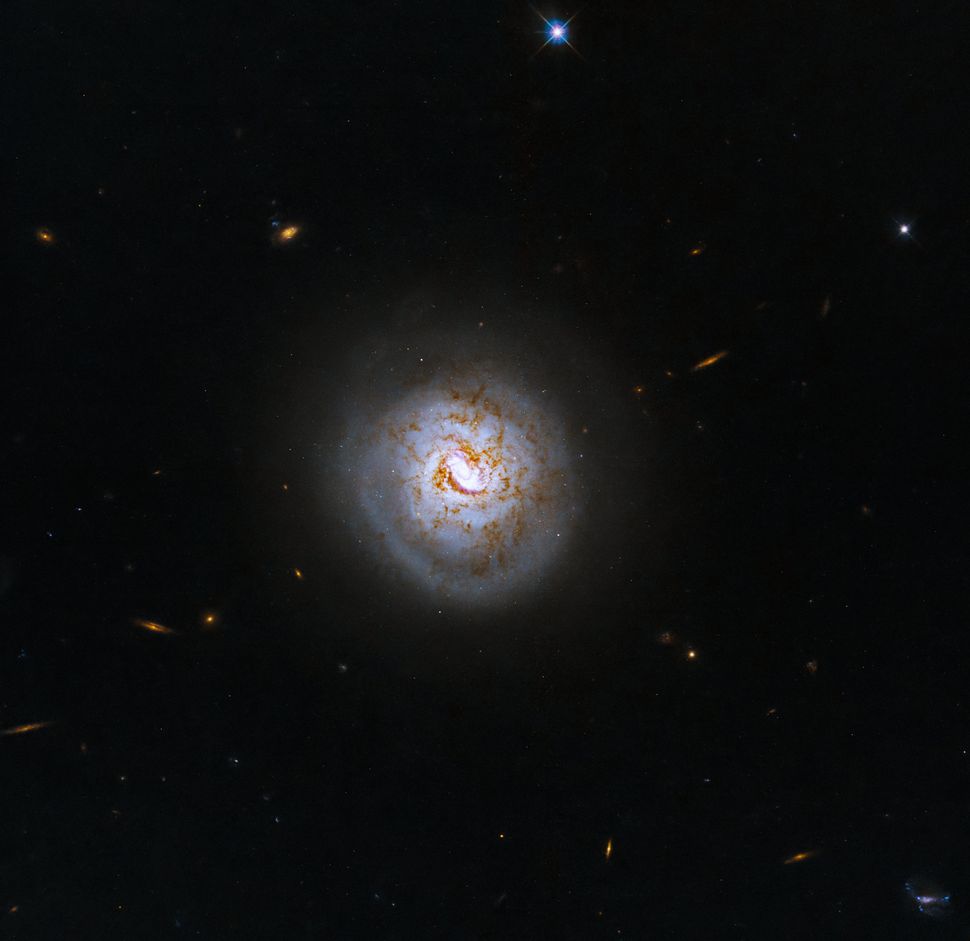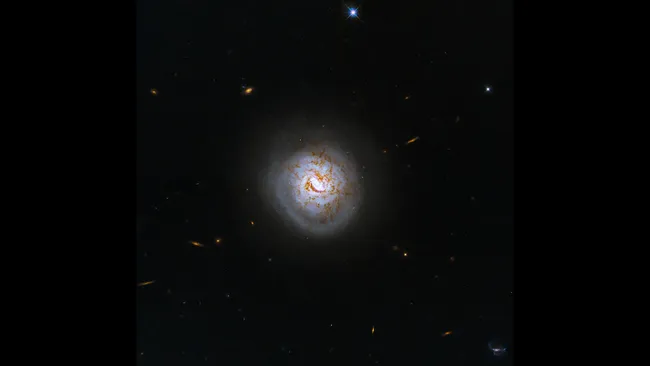Weekly Space Snapshot: Hubble Captures a ‘Baseball Galaxy’ Featuring a Black Hole at its Core
ESO 420-G013 is a face-on spiral galaxy with an almost perfectly round disk and an active black hole lighting up its starry guts.
ESO 420-G013 is an extraordinary face-on spiral galaxy that shines brightly. This captivating image was captured by the Hubble Space Telescope on January 30, 2024. Located 50 million light-years away in the constellation Sculptor, this galaxy stands out due to its unique characteristics.
The Hubble image reveals the presence of dark dust lanes, which are rare in this type of spiral galaxy, against the backdrop of thousands of stars. The galaxy’s most remarkable feature is its nearly perfect round disk, which is visible thanks to Hubble’s direct face-on view of ESO 420-G013. Since its launch in 1990, the Hubble Space Telescope has provided us with this exceptional perspective.
ESO 420-G013 is not only a splendid example of a spiral galaxy but also classified as a Seyfert galaxy. These galaxies are named after the American astronomer Carl Keenan Seyfert, who extensively studied them in 1943. Seyfert galaxies possess an intensely bright, point-like active galactic nucleus fueled by a supermassive black hole. Within ESO 420-G013, this voracious black hole is drawing in surrounding matter and emitting powerful radiation. Additionally, the galaxy is undergoing a rapid formation of new stars.
This image of ESO 420-G013 showcases its remarkable features and provides valuable insights into the nature of spiral galaxies and the powerful forces at work within them.

ESO 420-G013 stands out due to its unique visibility. Unlike most galaxies with active galactic nuclei, where the brightness of the black holes overshadows the host galaxy’s light, Seyfert galaxies like ESO 420-G013 allow for clear detection of the surrounding galaxy structure.
Hubble captured ESO 420-G013 as part of its study on luminous infrared galaxies, which are renowned for their remarkable brightness in the infrared spectrum.
This article is republished from livescience under a Creative Commons license. Read the original article.
Do not forget to share your opinion with us to provide you with the best posts !




0 Comments